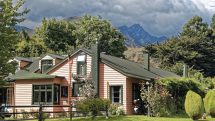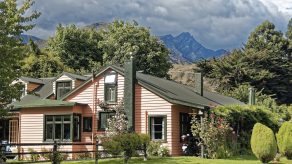Climate change is likely to mean heatwaves are more frequent, longer and more intense. This looms as a major threat to public health and to the liveability of Australian cities. South Australia is particularly vulnerable – since the 1990s, temperatures in Adelaide have been showing a dramatic upward trend.

Image by Makalu from Pixabay
One suggestion for mitigating the effects of climate change is the use of green infrastructure, forests and nature-based solutions. These are cheap, sustainable, and effective means of reducing the impact of warming cities.
Urban trees are an effective tool for reducing land surface temperatures for entire suburbs, and even cities. But as yet we don’t know much about their localised effects, particularly in the places where cooling is most important – our residential neighbourhoods.
, together with the , set out to . And we did it at the time when a cooling effect was most needed – during an extreme heatwave in western Adelaide.
We found that the humble home garden is more than pulling its weight. Although they only cover about 20 per cent of urban land, domestic yards account for more than 40 per cent of tree cover and 30 per cent of herbaceous cover, in the form of grass. This is a considerably higher tree canopy cover than for a typical park or other urban green area, which tend to have more grass.
The density of greenery in household yards kept land surface temperatures up to five and six degrees Celsius below similar non-vegetated areas, particularly in neighbourhoods away from the cooling effects of the sea breeze.

Image by Makalu from Pixabay
The study location included industrial areas, infrastructures and high-density residential areas that lacked green yard and garden space. These were the hottest areas.
Conversely, the coolest areas, both by day and night, included residential yards, such as backyards, and front yards. Open green space was the coolest land use during the day, but likely failed to extend its temperature-lowering effects far enough to benefit residential areas, particularly at night. Instead, the most reliable cooling for homes was literally right at their door.
The study concentrated on land surface temperatures, but these affect air temperatures too, because of microclimatic interplay between urban land and atmosphere.
This pronounced and localised cooling benefit has important implications for urban policy. We estimate that increasing green cover in non-vegetated areas could reduce local heat by several degree Celsius, as found in existing green yards. On the other hand, we also estimate that removing existing vegetation, through urbanisation, infill and densification could significantly increase local land surface temperatures, particularly during the day.
Urban planning is increasingly taking extreme urban temperature into account. Our results clearly indicate that encouraging urban greening is a simple, effective means of mitigating the negative effects of a warming climate on cities and people. It’s a strategy that needs to begin now: urban forests don’t grow quickly, and we need to be encouraging low-water use herbaceous cover as a stopgap until a large array of shade trees can take over the job of green cooling.








